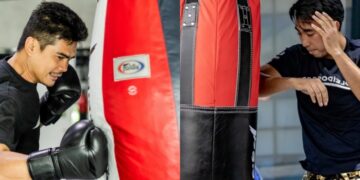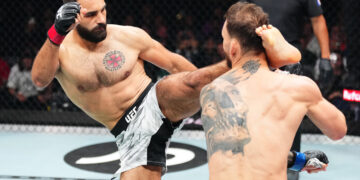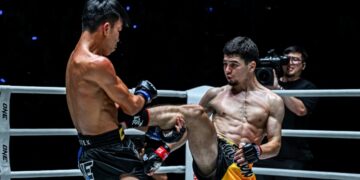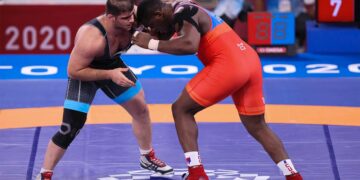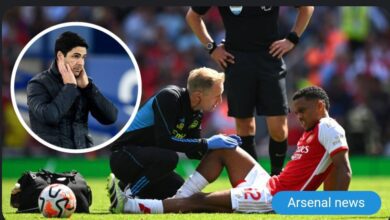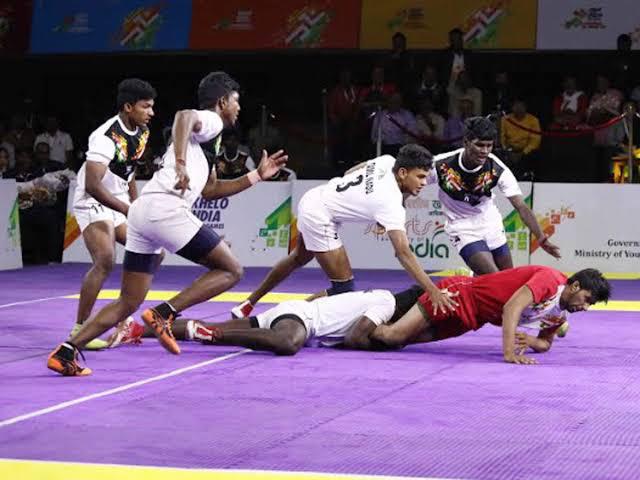Nothing feels as rewarding as landing a well-executed strike that finishes the match or secures a win. The knockout is the crème de la crème of combat sports like mixed martial arts (MMA), Muay Thai, and boxing. Fans love it, and nothing shows who the better fighter is like a knockout finish.
Knockouts aren’t just a way to electrify crowds and boost your ego; they are an invaluable tool that can change the momentum of a fight at any instance. That’s the main benefit of developing knockout power. You’re never out of a fight when you have fight-ending power.
Four Things You Should Do To Develop Knockout Power
Enough of the hype, you’re probably eager to know how to develop that fight-ending power in your strikes. Let’s dive into what you need to work on to deliver a decisive strike that can end any fight in the blink of an eye!
1) Build Explosive Strength
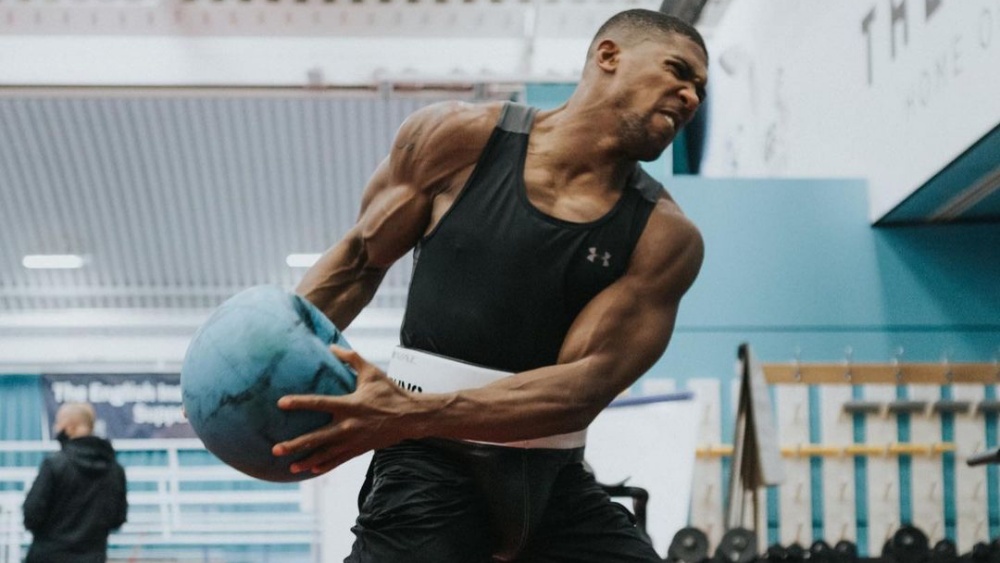
Mimic the motion of your strikes with explosive exercises to build speed, power, and muscle memory that translates directly into your punches.
Your ability to quickly generate force is what makes your strikes powerful. Strength helps, but explosive strength is what you really want. That determines your ability to rapidly apply force, which leads to knockouts.
Some of the things you can do to build explosive strength include:
Heavy Compound Lifts
Lifting heavy weights explosively is the key to building explosive power. You’re not trying to lift weights slowly and return them to the starting position. Instead, you try to perform your reps as fast as possible while maintaining proper technique.
Some of the exercises fighters should focus on include:
- Bench Presses: Bench presses help build the push muscles in your upper body, such as your triceps, chest, and shoulders, which add to the force behind your strikes.
- Overhead Presses: Overhead presses engage your triceps and shoulders.
- Deadlifts: Deadlifts help to build your posterior chain, which plays a crucial role as power travels through your lower body into your strikes.
- Squats: Proper striking technique often involves using your feet to generate power from the ground up. The stronger your legs are, the more power you can generate. Check out the legs of some of the greatest knockout artists in combat sports like Mike Tyson. His quads are still impressively built at 58.
Stay in the three- to six-rep range when working on explosive strength. Use weights you can’t rep more than six times, and explode while performing your reps.
Plyometrics
Plyometrics are another effective way to build explosive strength that translates into harder strikes. Some would even argue it’s a better approach than lifting weights since you don’t have to decelerate while performing your reps.
Some of the most effective plyometric exercises for explosive power include:
- Medicine Ball Swings: This exercise mimics the mechanics of a punch, making it an excellent way to increase your punching power.
- Clap Push-Ups: This improves explosive power in your chest, triceps, and shoulders.
- Box Jumps: This exercise builds explosive power in your legs, increasing kicking power.
- Depth Jumps: This also builds explosive power in your lower body.
Perform plyometric exercises two to three times weekly to noticeably increase your fight-ending power. When working out, focus on maximum effort and perform reps explosively.
2) Master Proper Technique
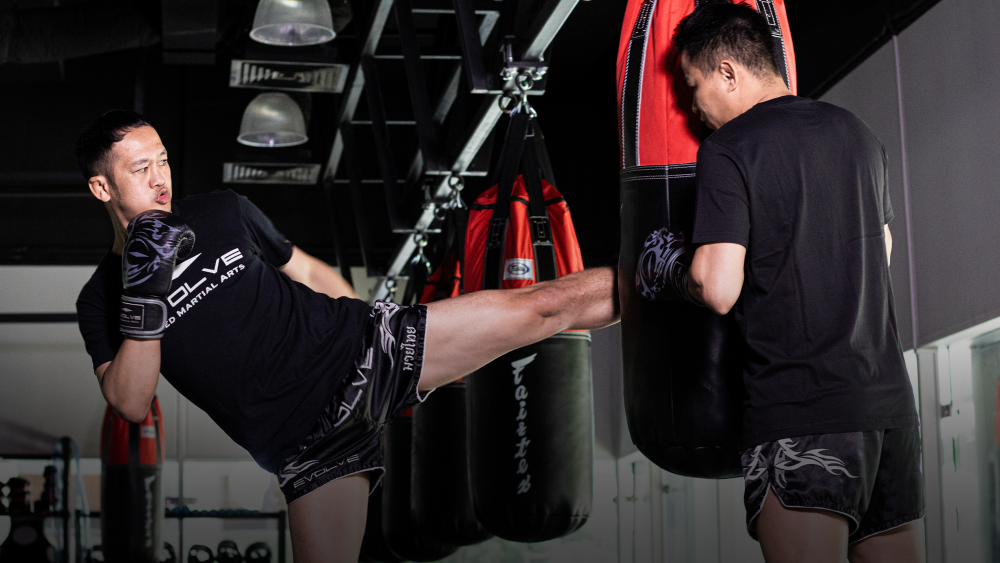
When training, always prioritize proper technique over strength—because power without precision is wasted energy.
Having knockout power doesn’t mean as much when you don’t know how to punch or kick correctly. Poor technique reduces the power in your strikes, while good technique increases it.
The Kinetic Chain: Generating Power From The Ground Up
Knockout strikes are the result of your entire body working as a unit, not just your arms or legs. The kinetic chain refers to the energy transfer from your feet through your legs, core, and upper body to generate power when striking.
The power behind a punch starts with your feet pushing on the ground to generate energy that travels through your legs, intensifies as you rotate your hips, and moves through your core to your shoulders and finally your fist.
The kinetic chain for kicks is similar, but instead of traveling to your shoulders, the energy goes from your hips to your kicks.
Spend lots of time drilling techniques and working with instructors to ensure you’re using proper mechanics.
3) Strengthen Your Core
Your core is the bridge that links your upper and lower body. A lot of the force you generate with your legs will be lost if you don’t have a strong core that can transfer all that energy.
Some exercises for building your core include:
- Hanging Leg Raises: This exercise helps to strengthen your lower abs.
- Russian Twists: This exercise helps develop rotational strength, leading to more powerful hooks and crosses.
- Planks With Shoulder Taps: This is great for improving core stability, helping you to stay balanced while throwing strikes.
- Cable Woodchoppers: This exercise mimics punching mechanics and builds your rotational muscles.
Core exercises should be a core part of your strength and conditioning routine. Target your core muscles from different angles three to four times weekly.
4) Increase Hand And Leg Speed
You probably already know that the formula for force is mass times acceleration if you paid attention in physics class. The faster your strikes reach their target, the more force they land with.
Working on your hand and leg speed should be a priority if you want to develop knockout power. Performing drills on speed or double-end bags helps with hand speed, hand-eye coordination, and fast-twitch muscle response. Shadowboxing with resistance bands can also help with hand speed.
Agility ladder drills, band-resisted kicks, jump rope, and rapid-fire kicks on a heavy bag are excellent ways to improve kicking speed.
Knockout Power Is Developed
While some people are natural heavy hitters, most knockout artists spend years working on the above mentioned things to develop fight-ending power. It’s something you constantly have to work on. Improve your technique, build explosive strength, and develop your punching and kicking speed to maximize your striking power.
You may also like:
How To Master The Lead Hook
Boxing is often referred to as “the sweet science” because it is more than just throwing punches. Boxing is about precision, timing, and strategy to scientifically defeat the opponent. While fundamental techniques are the core…
The lead hook can be a double-edged sword. Land perfectly, and your opponent’s night might be over. Throw it half-heartedly and you might fight yourself eating a hard right that puts you to sleep. The…
Boxing is often perceived as an offensive sport where speed, power, and aggression dictate success. While true in certain aspects, at its highest levels, boxing is just as much about defense and control as it…
Becoming a great fighter in martial arts requires more than strength, speed, or endurance—you must also be smart. While most martial artists typically aren’t viewed as the most cerebral members of society, there are clear…
Oleksandr Usyk is considered one of the greatest boxers today. Still undefeated, Oleksandr has recently defeated boxing heavyweight giants like Anthony Joshua (twice), Daniel Dubois, and Tyson Fury (twice). While he’s still relatively new to…
Boxing is often seen as a sport of power and aggression, with knockouts and flurries of punches stealing the spotlight. However, at its core, boxing is a game of skill and smart movement. One of…
BJJ constantly evolves with new techniques and forgotten ones being rediscovered. While classic submissions are staples in every grappler’s arsenal, many lesser-used techniques can catch opponents off guard and open up new attacking opportunities. Focusing…
A loss during competition sometimes feels like a sucker punch to your ego. One minute, you’re on top of the world and questioning every decision you made during the match—and maybe even in life—the next…
Roadwork has been the main cardiovascular training activity for martial artists in styles like Kickboxing, Muay Thai, and Boxing. But is it really the most effective way to improve your cardio for martial arts? Or…
The teep is one of Muay Thai’s fundamental techniques and arguably the most used strike. It’s the kicking version of the jab and serves similar purposes. Also called a push kick, the teep can be…
Mental fatigue is more than just feeling tired. It results from prolonged focus, decision-making, or stress, leading to a noticeable decline in cognitive performance. In today’s fast-paced world, where we juggle multiple tasks, mental exhaustion…
In Brazilian Jiu-Jitsu, the ability to control an opponent and dictate the pace of a match is just as important as finishing a submission. Many practitioners focus heavily on submissions, but without solid positional control,…







